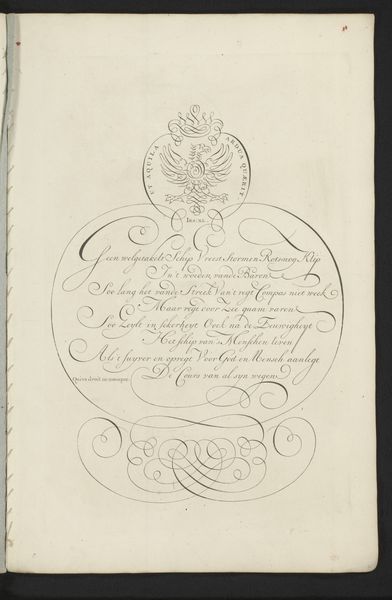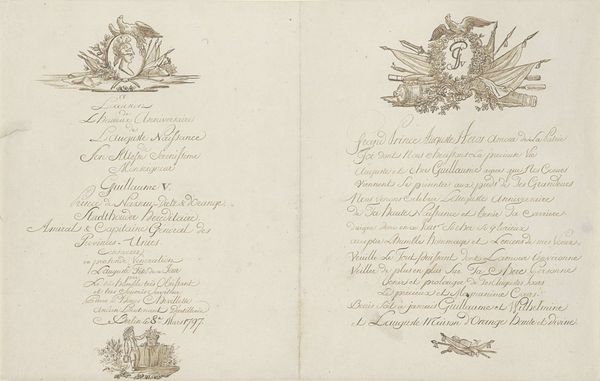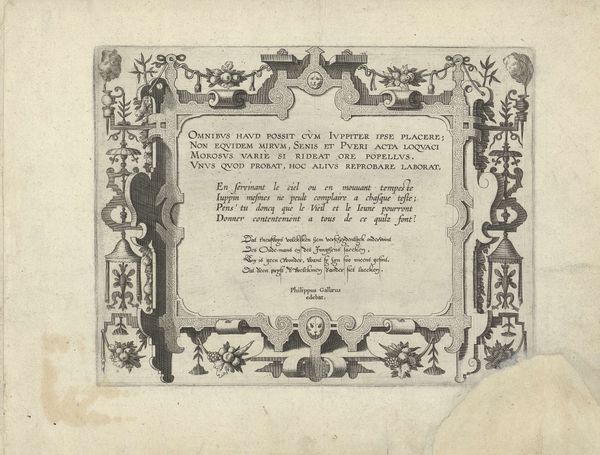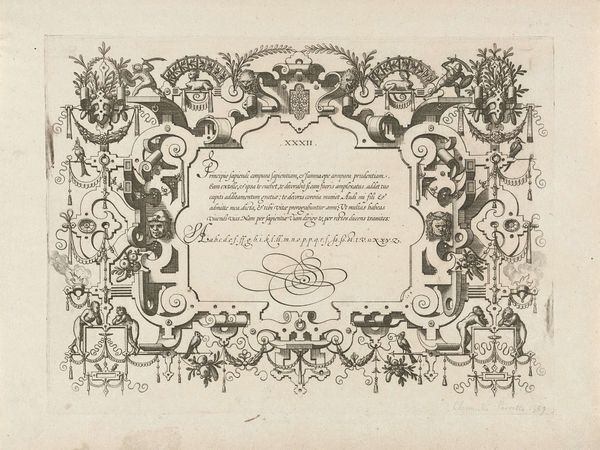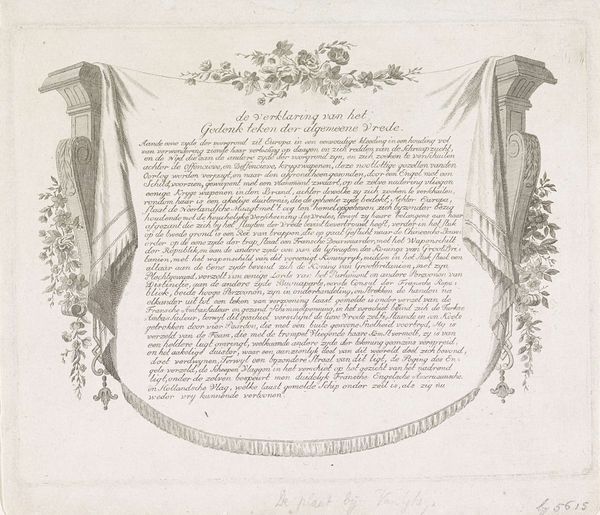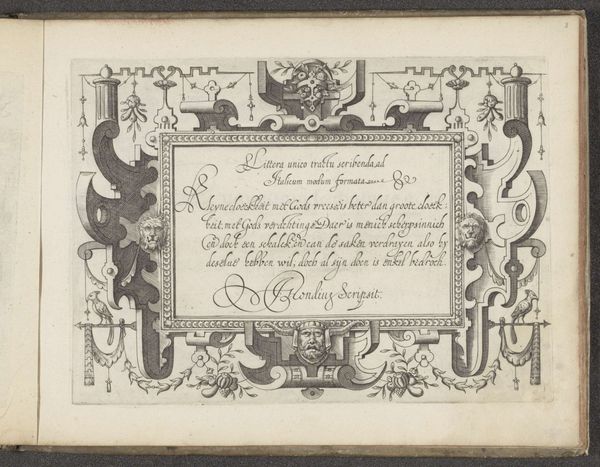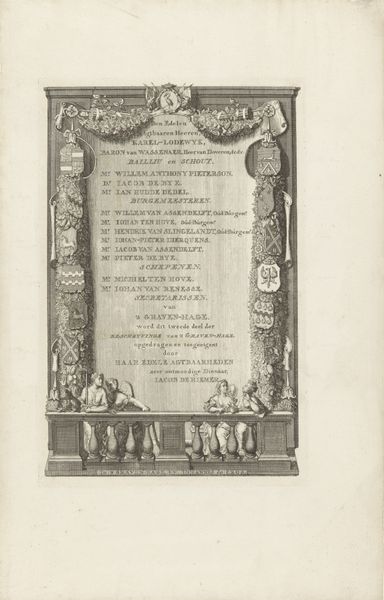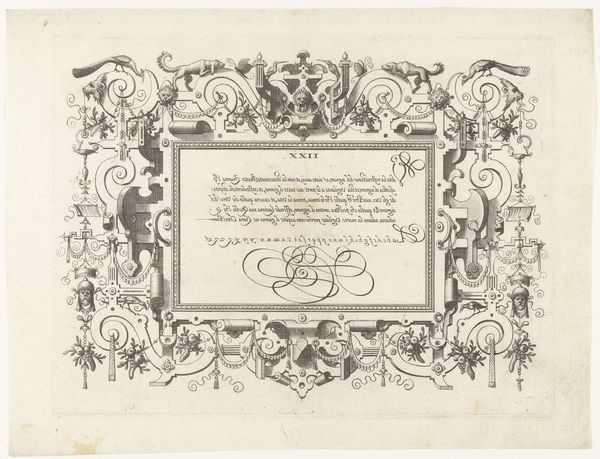
Vers op de heldenrol van de prins van Oranje in de slag bij Waterloo, 1815 1815
0:00
0:00
anonymous
Rijksmuseum
drawing, print, paper, ink, engraving
#
drawing
#
aged paper
#
light pencil work
#
allegory
#
narrative-art
# print
#
old engraving style
#
sketch book
#
figuration
#
paper
#
personal sketchbook
#
ink
#
sketchwork
#
journal
#
romanticism
#
sketchbook drawing
#
history-painting
#
storyboard and sketchbook work
#
sketchbook art
#
engraving
Dimensions: height 255 mm, width 167 mm
Copyright: Rijks Museum: Open Domain
Curator: The Rijksmuseum holds this intriguing print, “Verse on the heroic role of the Prince of Orange in the Battle of Waterloo, 1815,” dating back to the very year of the battle. Editor: It looks incredibly dense! The allegorical figures and the banners create this overwhelming sensation, a jumble of detail almost suffocating the poem above. Curator: Indeed. Note the medium here; it’s an engraving, a technique where lines are incised into a metal plate, then inked and printed onto paper. We must also acknowledge the socio-political landscape from whence this commemorative art arose. Consider the speedy consumption and deployment of imagery in service to solidify Dutch national identity, in the wake of decades of war. Editor: You can feel the propagandistic impulse. Those chubby cherubs holding up what reads like a victory scroll...it's all meant to imbue the viewer with nationalistic fervor. Even the choice of figuration, chaotic but centrally focused on Prince William, becomes a symbol itself, suggesting divinely ordained victory and, in the Romantic style, heroism in warfare. The symbolic function here attempts to fuse religious and national sentiments. Curator: That fusion certainly bolstered popular support and allegiance at the time. From a material standpoint, prints allowed for wide distribution of this messaging. This artwork’s creation as part of an immediate public narrative shaped understanding of Waterloo by solidifying Orange’s leadership. In turn this also affected market dynamics; popular images and stories were highly marketable items in 1815's print culture. Editor: Right, the mass dissemination really is key. The symbols only gain power through collective understanding and reinforcement. Even today, we see how the circulation of an image, especially one laden with meaning, shapes the cultural narrative around historical events. The flags themselves speak to combined effort and strength after so much conflict. It seems more important, in the final analysis, to ask what are we to learn from all the iconography it holds? Curator: Absolutely, the engraving's survival highlights the intricate interplay between national narrative, visual media, and economic realities in the early 19th century. Editor: I concur. Considering all this helps clarify why particular imagery becomes fixed in our minds, regardless of their historical fact.
Comments
No comments
Be the first to comment and join the conversation on the ultimate creative platform.
